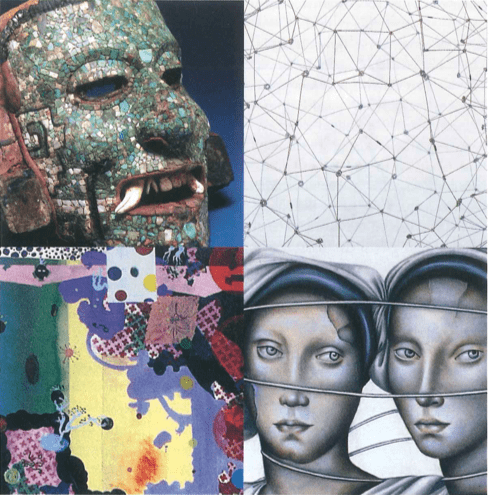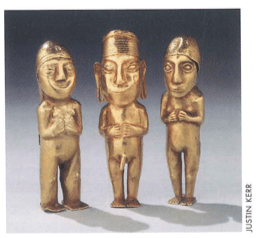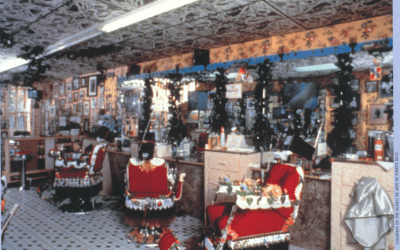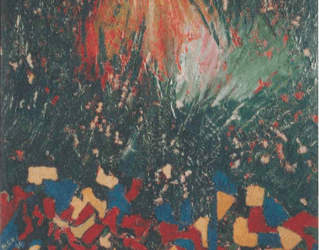Discovering Latin America Art at Harvard
Old Treasures and New Initiatives
On the Latin American art front, Harvard University has long been known for the strength of its Mayan collection at the Peabody Museum in Cambridge and the incredible Pre-Colombian treasures at Dumbarton Oaks in Washington D.C. Harvard scholars have been doing research, offering courses, and organizing exhibitions around these rich resources for decades.
Despite the University’s demonstrated commitment to Latin American antiquities, until recently there was remarkably little happening on “post-contact” Latin American art, with almost no research, courses or exhibitions related to the past 500 years of Latin American visual arts at Harvard.
“As a Harvard art history undergraduate and then graduate student focusing on contemporary Latin American art, there was interest in but no commitment to the field,” said Mary Schneider Enriquez, who later became a Latin American art critic and curator. “It was frustrating because by the 1990s was a time of an explosion of activities and interest related to Latin American arts, and at this same time you saw very little happening at Harvard.”
“In the past year, however, things have begun to change and change rapidly. It is as if, all of a sudden, Harvard has discovered Latin American art,” she said.
This academic year, the Harvard University Art Museums, the Department of the History of Art and Architecture, and the David Rockefeller Center came together to organize for the first time the year-long series New Perspective on Latin American Art from the 16th Century to the Present.
In addition, this past semester, Latin American art historian Tom Cummins from the University of Chicago offered two courses as a Visiting Professor on themes in colonial Latin American art, the first regular courses on post-contact Latin American art ever offered in Harvard’s History of Art and Architecture Department. Furthermore, in March 2001, Harvard Fogg Art Museum is hosting a major exhibition of contemporary Latin American painting, Geometric Abstraction: Latin American Art from the Patricia Phelps de Cisneros Collection.
A number of factors came together to ignite this increase in activity.
“There was a remarkable coming together of people and ideas, and a strategy for how to promote Latin American art at Harvard,” said John Coatsworth, Director of the Center.
One of the first steps was getting an accurate assessment of interest in Latin American art around the University, and then exploring opportunities for strengthening the research, teaching, production and exhibition of Latin American art at the University.
As part of that effort, the David Rockefeller Center asked Mercedes Trelles, a doctoral student in the History of Art and Architecture, to interview faculty and curators across the University to better understand the history and potential for Latin American art at Harvard and to write up those findings.
The report highlighted some surprises. There was, in fact, more post-contact Latin American art content in Harvard courses than some thought, but not necessarily in the History of Art and Architecture Department. Instead, issues related to the Latin American arts were more typically being taught as part of advanced language courses in the Department of Romance Languages and Literatures or at the Graduate School of Design.
Connecting Harvard faculty with some of Latin America’s collectors and experts, many of whom are members of the international Advisory Committee of the David Rockefeller Center, was another critical step forward. Members included David Rockefeller, Angeles Espinosa Yglesias, Patricia Phelps de Cisneros, Mary Schneider Enriquez, Barbara Duncan, Estrellita Bograd Brodsky, as well as faculty members John Coatsworth and James Cuno. This group enthusiastically agreed to form a subcommittee to explore ways to promote Latin American art at Harvard.
“Reading the document by Mercedes Trelles before the first subcommittee meeting signaled something very important for me,” said subcommittee member Patricia Phelps de Cisneros. “It was a kind of mea culpa from Harvard, saying, essentially, this is an important area and we’ve done very little, and we need to change that. This demonstrated to me that Harvard was serious about remedying this situation and serious about doing something significant on Latin America art.”
“A number of things have amazed me in the process over the past months since we had that first meeting in New York in October 1999,” said Cuno. “The first is the speed and with which things have come together after we decided to do something’. The second is the enthusiasm that this initiative has met with both within the University, and from outside.”
There are discussions about a wing of a new art museum at Harvard being devoted to Latin American collections. There are also discussions of new courses and visiting faculty in Latin American art. The Department of the History of Art and Architecture just made an offer to a specialist in Latin American colonial art for a tenured position.
Momentum is developing, and there is every indication that Latin American art has found a home at Harvard.
Winter/Spring 2001
Steve Reifenberg is the executive director of the David Rockefeller Center for Latin American Studies.
Related Articles
Pre-Columbian Art at Dumbarton Oaks
In the spring of 1912, Robert Woods Bliss, a Harvard alumnus and U.S. Embassy Secretary in Paris, was taken by a friend to a shop on the Boulevard Raspail, where he saw, for the first time…
Museo de Arte de Puerto Rico
Museo de Arte de Puerto Rico Toward a New Museum Model As a Harvard student from Puerto Rico researching my doctorate in art history, I tended to think of museums as places to preserve, study and exhibit unique objects. Now, as a curator for the Museo de Arte de...
A Life of Art
Art is a very enhanced form of expression: through it, the artist captivates its public through the senses, but also conveys a message that appeals to the mind. Art is therefore a means of…






